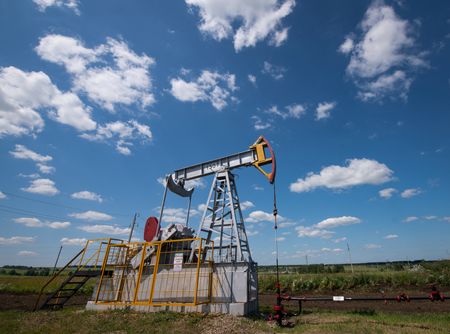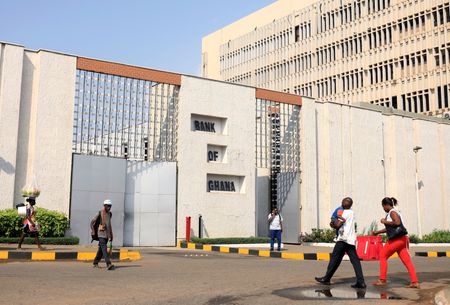HOUSTON (Reuters) -Oil prices rose on Thursday as analysts pointed to low inventories and renewed Middle East risks as factors supporting the market.
Brent crude futures were up 23 cents, or 0.3%, to $68.75 a barrel by 11:04 a.m. ET (1504 GMT), while U.S. West Texas Intermediate crude futures rose 67 cents, or 1%, to $67.05 a barrel.
U.S. President Donald Trump has said letters notifying smaller countries of their U.S. tariff rates would go out soon, and has also alluded to prospects of a deal with Beijing on illicit drugs and a possible agreement with the European Union.
“Near-term prices (are) set to remain volatile due to the uncertainty over the final scale of U.S. tariffs and the resultant impact on global growth,” said Ashley Kelty, an analyst at Panmure Liberum, adding that prices would likely settle lower in the medium term.
The oil market was also reacting to a tightened inventory scenario, said John Evans, analyst at PVM Oil Associates.
U.S. crude inventories fell by 3.9 million barrels last week, government data on Wednesday showed, compared with analysts’ expectations in a Reuters poll for a 552,000-barrel draw.
Last week, the International Energy Agency said that oil output increases were not leading to higher inventories, which showed markets were thirsty for more oil.
“Oil thinking has been distracted from the Middle East, and the reminders of Israel’s attacks into Syria and the drone attacks on oil infrastructure in Kurdistan are timely and once again add a little fizz to proceedings,” Evans said.
Drone attacks on oilfields in Iraq’s semi-autonomous Kurdistan region have slashed crude output by up to 150,000 barrels per day, two energy officials said on Wednesday, as infrastructure damage forced multiple shutdowns.
Markets were continuing to look for signals of tighter supply or higher demand, but clarity was lacking, said Phil Flynn, senior analyst for Price Futures Group.
“Everybody is waiting for the boogie man, but the boogie man hasn’t shown up yet,” Flynn said.
Meanwhile, a tropical disturbance in the northern Gulf of Mexico was not expected to develop into a named storm as it makes its way west before moving onshore in Louisiana later on Thursday.
Rainfall totals in Southeast Louisiana were expected to be about four inches (10 cm), according to the U.S. National Hurricane Center.
(Reporting by Erwin Seba in Houston, Seher Dareen in London, Anjana Anil in Bengaluru and Emily Chow in Singapore. Editing by Mark Potter, Rachna Uppal and Marguerita Choy)










